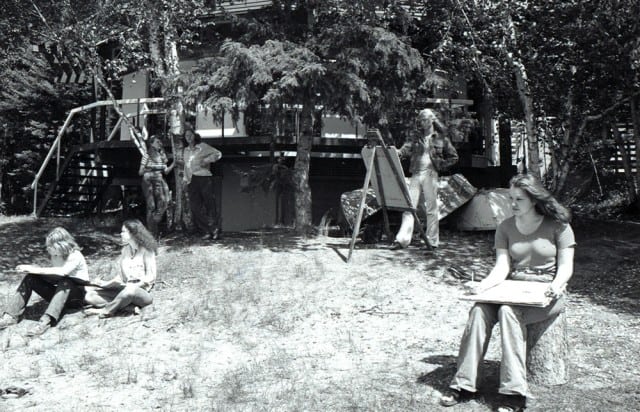KASIA MAJEWSKI

Kenderdine campus was a rare opportunity for fine arts and pure science students to mingle and find common ground.
Kasia Majewski is the president of the University of Saskatchewan Biology Club.
Paying more money for a lower-quality education with fewer resources is ridiculous.
I’ll admit I found the last few increases in student tuition rates perplexing, but I (naively) believed that I would be getting more because of them. I thought that my education would now be worth more because it was more expensive.
With the closure of the Emma Lake campus facility, however, came the rude awakening that I am paying more for my education but have fewer resources at my disposal. In fact, an integral part of the biology program had recently been eliminated with no advance notice.
I puzzled over how it was possible for administration to expect future biology students, who want to pursue careers in fieldwork, to apply for such work without having any field research experience.
Where does administration think field data comes from? A stork doesn’t deliver it to our labs. Someone has to collect information, and to do that, they need knowledge and practice.
This is when I realized that perhaps administration doesn’t actually understand how students learn or what they need to find work.
That would explain how the university is able to look at an integral resource for biology and fine art students alike and see only outdated equipment and cabins with unsanitary, unattached bathrooms. A money sink.
Administrators fail to see the immense historic value the Kenderdine campus holds for both artists and scientists. They don’t see the rare opportunity the facility offers to study boreal forest diversity or the value of the tranquility and beauty of the setting.
The disconnect between administration and the student body is immense and students are paying the price.
The biology faculty is working hard to restore order to undergraduate degree requirements, which previously included a period of field study at Kenderdine campus. A new location for the 2013 summer field course has been tentatively established — still located at Emma Lake, but using the nearby Camp Okema facilities.
In addition, a committee comprising biology faculty, fine arts faculty, high-profile community artists and land use and environmental studies faculty has been established to improve the Kenderdine facility. The campus is scheduled to reopen in three years’ time.
Where financial backing for improvements to the facility will come from is still unclear.
The great debate lies in whether the university should accept corporate sponsorship, should it be offered, as financial aid. But as tempting as it is, corporate sponsorship may fall into direct conflict with the purposes of the campus. Is it possible for biology students to learn about the ecology of natural systems under the watchful eye of a campus sponsored by an oil or mining company?
There are no plans to sell the property but there is also yet to be a clear vision for which parts of the facility will be refurbished or what will be newly built on the site, save for the $33-million project by the Facilities Management Division. This project includes the installation of a zip line and jungle gym; it’s hardly what biology and arts students need, but is perhaps a first step toward revitalizing the campus.
Personally, as much as I appreciate foresight into a potentially improved field site (this is a highly optimistic viewpoint), the timeline students operate on is much shorter than that of tenured faculty and administration. We, the students, need to demand more educational value for our money now.
The disconnect between administration and the student body is immense and students are paying the price.
—
Photo: U of S Archives